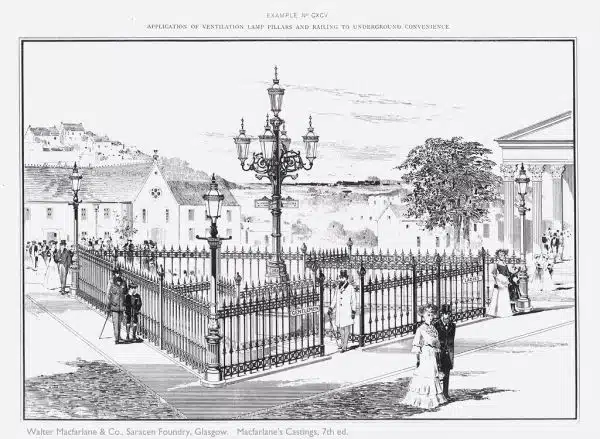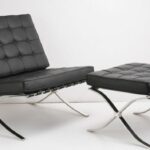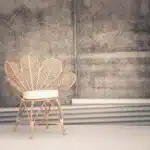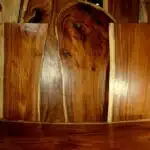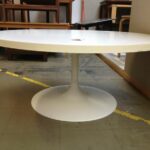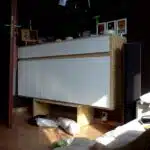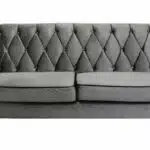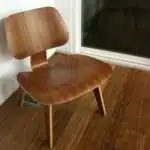Cast iron furniture has been a popular choice for centuries due to its durability and classic design. However, with the rise of mass-produced imitations, it can be challenging to identify genuine cast iron furniture from replicas. As a furniture expert or restoration specialist, it is essential to have a thorough understanding of the characteristics that distinguish authentic cast iron pieces from imitations.
In this article, we will explore the key features that differentiate cast iron furniture from other types of metal furniture. We will also discuss how to identify different types of casting techniques used in creating cast iron pieces and provide tips on how to spot signs of wear and damage. Whether you are a collector or just looking to purchase a piece of cast iron furniture for your home, this guide will equip you with the knowledge necessary to make informed decisions and ensure you are getting an authentic piece that will stand the test of time.
The History Of Cast Iron Furniture
Cast iron furniture has a rich history that dates back to the 17th century. Its evolution of design is closely tied to technological advancements that made it possible to create intricate patterns and ornate details. Cast iron furniture began as a luxury item, available only to the wealthy, but eventually became more accessible to the masses.
The cultural significance of cast iron furniture cannot be overlooked. It not only served as functional pieces for seating and dining but also as decorative elements in homes, gardens, and public spaces. Cast iron furniture was often used in Victorian homes as a way to display wealth and status. It was commonly found in parks and public gardens during the late 1800s and early 1900s.
Understanding the history of cast iron furniture is essential for identifying its authenticity. However, it is equally important to understand cast iron as a material. By examining its properties, one can determine if a piece is truly cast iron or if it has been made from another material imitating its appearance. In the subsequent section, we will delve deeper into understanding cast iron as a material and how it can be identified in furniture pieces.
Understanding Cast Iron As A Material
As discussed in the previous section, cast iron furniture has a rich history that dates back to the Victorian era. Cast iron is a highly durable material that has been used for centuries for its strength and resistance to corrosion. Understanding cast iron as a material involves knowing the melting process and its physical properties.
The process of making cast iron involves melting pig iron, which is a crude form of iron, along with scrap steel and coke in a furnace. The mixture is heated until it becomes molten, and then poured into molds to create different shapes. Cast iron has several physical properties such as high compressive strength, excellent wear resistance, and good shock absorption. These properties make it an ideal material for furniture.
When looking at cast iron furniture, it’s essential to understand the different types available in the market. There are several types of cast iron furniture: Victorian, Art Deco, Mid-century Modern, and Contemporary styles. Each style has its unique characteristics that distinguish it from others. Whether you’re interested in antique or modern pieces, understanding these styles’ nuances can help you identify genuine pieces when shopping.
Moving on to the next section about identifying types of cast iron furniture, we will explore each style’s distinctive features to help you determine what type of cast iron furniture you have or want to purchase. Knowing the characteristics of each style can be helpful in determining their value and authenticity while also providing insight into their historical significance. Let’s dive deeper into these styles to gain more knowledge about cast iron furniture!
Types Of Cast Iron Furniture
Transport yourself back to the 19th century when cast iron furniture was all the rage. Cast iron furniture was a popular choice for outdoor furniture due to its durability and ability to withstand harsh weather conditions. It was also an affordable alternative to other materials such as wood and wrought iron.
Cast iron furniture comes in a variety of designs, each with its unique charm. Some popular designs include the Victorian, Art Nouveau, and Art Deco styles. The Victorian style is known for its intricate details and ornate patterns. On the other hand, Art Nouveau is characterized by flowing curves and natural forms. Finally, the Art Deco style features sharp angles and geometric shapes.
Restoration tips are essential when it comes to maintaining cast iron furniture’s appearance over time. To clean your cast iron furniture, use a wire brush or sandpaper to remove any rust or blemishes on the surface. Afterward, apply a coat of rust-resistant primer followed by a topcoat of paint that matches your desired color scheme. Additionally, you can apply a sealant to protect your cast iron furniture from further damage.
Moving forward, understanding the characteristics of authentic cast iron furniture is crucial in identifying genuine pieces from replicas.
Characteristics Of Authentic Cast Iron Furniture
Cast iron furniture is known for its weight and durability, making it a popular choice for outdoor furniture. Its design can range from simple and utilitarian to ornamental and intricate. Finishes and colors vary widely, with markings and joints often identifying the maker or style. Rust prevention is important to maintain the furniture’s longevity and can be achieved through regular maintenance or a paint coat. Patina and wood are often used to add character and quality to cast iron furniture, while age and authenticity can be determined by researching the maker and style.
Weight
One of the key characteristics to look for when identifying authentic cast iron furniture is its weight. Cast iron furniture is known for its heft and solidity, as it is made from molten metal that has been poured into a mold. When examining a piece of cast iron furniture, one should take note of its weight and compare it to similar pieces. Buying tips suggest that if the furniture seems too lightweight or flimsy, it may not be authentic cast iron.
Restoration techniques for cast iron furniture often involve cleaning and repainting the piece to restore its original beauty. However, before beginning any restoration work, one must first confirm the piece’s authenticity by checking its weight. If a piece is too lightweight or hollow-sounding when tapped, it may be made from another material such as aluminum or plastic. By carefully examining a piece’s weight, restoration specialists can determine whether it is worth restoring and how best to approach the restoration process.
In summary, weight is an important characteristic to consider when identifying authentic cast iron furniture. Buyers should take note of a piece’s heft and compare it to similar items before making a purchase. Restoration specialists should also examine a piece’s weight before beginning any work, as it can indicate whether the piece is truly made from cast iron or another material entirely. By paying attention to this critical characteristic, buyers can ensure they are investing in high-quality furniture that will withstand the test of time.
Durability
Another important characteristic to look for when identifying authentic cast iron furniture is its durability. Cast iron is known for its strength and ability to withstand the elements, making it a popular choice for outdoor furniture. The advantages of cast iron furniture include its resistance to rust and its ability to hold up against harsh weather conditions. However, there are also drawbacks to consider. Cast iron furniture can be heavy and difficult to move, and it requires proper maintenance to ensure longevity.
Despite these potential drawbacks, the durability of cast iron furniture is one of its most appealing features. With proper care and maintenance, cast iron furniture can last for many years without showing signs of wear or damage. This makes it a worthwhile investment for those who want high-quality furniture that will stand the test of time. Maintenance techniques may include regular cleaning and repainting as needed to keep the piece looking like new.
In conclusion, when considering characteristics of authentic cast iron furniture, durability is an important factor to take into account. While there may be some drawbacks associated with this type of furniture, such as weight and maintenance requirements, the benefits far outweigh any potential downsides. By investing in high-quality cast iron furniture and properly caring for it over time, homeowners can enjoy beautiful and long-lasting pieces that enhance their outdoor living spaces.
Design
When it comes to identifying authentic cast iron furniture, another important characteristic to consider is its design. While the durability of cast iron furniture is a major selling point, the aesthetic appeal of these pieces can also be a deciding factor for many homeowners. One aspect of design to consider is color schemes. Cast iron furniture can come in a variety of colors, including black, bronze, and even brightly colored finishes. The color choice can add to the overall look and feel of an outdoor living space.
Another design consideration when choosing cast iron furniture is upholstery options. While some pieces may not require upholstery, such as benches or tables, others may have cushions or seat pads. When selecting upholstery for cast iron furniture, it’s important to choose fabrics that are durable and weather-resistant, as well as comfortable for sitting or lounging. Fabric patterns and colors can also play an important role in enhancing the overall aesthetic appeal of the piece.
Overall, the design of authentic cast iron furniture should not be overlooked when making a purchase decision. Color schemes and upholstery options are just two aspects to consider when selecting pieces that will enhance an outdoor living space. By taking into account both durability and design characteristics when identifying authentic cast iron furniture, homeowners can make informed decisions that result in beautiful and long-lasting additions to their homes.
Weight And Density
One of the most reliable methods of identifying cast iron furniture is through its weight and density. Cast iron is a heavy material that is denser than other metals used in furniture, such as aluminum or steel. By lifting the piece of furniture, you can easily gauge its weight and density. If it feels heavier than usual, then it’s likely to be cast iron.
Weight and durability are closely related in cast iron furniture. Cast iron is known for its durability and long-lasting qualities. It’s resistant to rust, corrosion, and wear and tear, making it ideal for outdoor use. However, care and maintenance are still important factors in preserving the quality of your cast iron furniture. Regular cleaning, oiling, and waxing will help protect it from environmental damage.
To maintain the weight, durability, and overall quality of your cast iron furniture, proper care and maintenance are critical. This includes regular cleaning using mild soap and water or a specialized cleaner designed for cast iron surfaces. Additionally, applying a protective coating such as oil or wax can help prevent rust buildup over time. With appropriate care measures in place, you can enjoy your cast iron furniture for years to come while maintaining its original beauty and quality.
Moving on to the next aspect of identifying cast iron furniture – surface texture and finish – there are several steps you can take to determine if a piece is made from this material.
Surface Texture And Finish
Having established the weight and density of a piece of furniture, it is also important to consider its surface texture and finish. These factors can provide valuable clues when trying to identify cast iron furniture, especially when combined with other identifying features.
One of the most common imitations of cast iron furniture is cast aluminum. While aluminum may look similar to cast iron at first glance, it is much lighter in weight and has a different sound when tapped with a metal object. Another imitation to watch out for is stamped steel, which can be made to resemble cast iron through clever painting techniques.
When identifying genuine cast iron furniture, pay close attention to the surface texture and finish. Cast iron will have a slightly rough surface texture due to its casting technique, whereas stamped steel will have a smoother surface due to being pressed into shape. Additionally, genuine cast iron will often have signs of wear and patina that are difficult to replicate on imitation materials.
Moving forward from here, it is important to delve deeper into the casting technique used in creating cast iron furniture. By understanding this process more fully, it becomes easier to discern between genuine antique pieces and modern reproductions or imitations that may not hold the same value or history.
Casting Technique
The casting technique is a crucial aspect to consider in identifying cast iron furniture. It involves pouring molten metal into a mold and allowing it to cool and solidify before removing the mold. The process, which dates back to ancient times, has evolved over the years, with modern technology enabling mass production of cast iron furniture.
Casting flaws are common in cast iron furniture, resulting from imperfect mold design or casting process. These flaws may include air pockets, cracks, or rough edges on the surface of the furniture. Identifying these flaws can help determine whether the piece is authentic or not.
When examining cast iron furniture for its casting technique, there are four key factors to consider:
- The quality of detail in the design
- The presence of casting flaws
- The weight of the piece
- The overall condition of the item
Understanding these factors will assist in identifying authentic cast iron furniture pieces and ensure that they are properly maintained for future use.
Moving on from casting technique, another important aspect to consider when identifying cast iron furniture is welding and joinery techniques utilized during manufacturing.
Welding And Joinery
Cast iron furniture is a popular choice for outdoor and indoor settings due to its durability and classic appearance. However, identifying cast iron furniture can be challenging, especially when it has undergone various restorations and repairs over the years. One way to identify cast iron furniture is by examining its casting technique. Cast iron pieces are created by pouring molten iron into a mold, resulting in a textured surface with visible seams. These seams are usually located on the sides or bottom of the piece and can help distinguish it from other materials such as wrought iron.
Another factor to consider when identifying cast iron furniture is welding techniques used in its construction. Welding involves fusing two separate pieces of metal together using heat or pressure. In some cases, welding may be used to repair broken or damaged cast iron furniture rather than replacing the entire piece. However, welds can often be identified by their smooth surface texture and lack of visible seams or casting marks.
Joinery methods are another crucial aspect to consider when identifying cast iron furniture. Joinery refers to how different parts of the furniture are connected to each other, whether through screws, bolts, or other fasteners. Cast iron joints are typically bolted together with visible nuts or bolts that can help distinguish them from other types of metal furniture that may feature more discreet joinery methods such as mortise and tenon joints.
As cast iron is susceptible to rust and corrosion over time, it is essential to properly maintain it for long-term use. In the next section, we will explore rust prevention methods for cast iron furniture and how they can prolong the life of your beloved pieces.
Rust And Corrosion
Rust and corrosion are two of the most common problems found in cast iron furniture. These issues can cause serious damage to the furniture’s appearance and structural integrity, making it essential for owners to take preventative measures to prolong their furniture’s lifespan.
Preventing rust is crucial in maintaining cast iron furniture. One effective method to prevent rust is by applying a protective coating or sealant on the furniture’s surface that will act as a barrier against moisture. Another preventative technique is ensuring that the furniture is not exposed to extreme weather conditions, such as rain or snow. Keeping your cast iron furniture dry will significantly reduce its chances of rusting.
Removing corrosion from cast iron furniture requires a delicate approach. Using abrasive cleaners or materials may scratch the surface of the metal, making it more susceptible to rusting and further damage. Instead, consider using gentle cleaning solutions such as vinegar or baking soda mixed with water. Always test any cleaning solution on an inconspicuous area before applying it to the entire piece of furniture.
With proper care, cast iron furniture can retain its beauty and functionality for years to come. By taking preventative measures and removing any signs of rust or corrosion immediately, owners can ensure their investment lasts for generations without any significant wear and tear. In the subsequent section, we will discuss some signs of wear and damage that owners need to be aware of when assessing their cast iron furniture’s condition.
Signs Of Wear And Damage
Rust and corrosion are two common types of damage that can affect cast iron furniture. While these damages may seem like minor issues, they can cause significant structural problems if left untreated. Rust, for instance, can weaken the material, making it more prone to breakage or collapse.
To identify cast iron furniture, you need to look for certain features. Generally, cast iron furniture is heavy and has a rough, textured surface. It also tends to have intricate designs that are often inspired by nature. Cast iron pieces are typically coated with a layer of paint or varnish to protect them from rust and other types of damage.
Common damages to cast iron furniture include rust, scratches, cracks in the joints or connections between pieces, and missing or broken parts. Repair solutions depend on the severity of the damage and can range from simple touch-ups to complete restoration projects. For minor damages such as scratches or small areas of rust, sanding and repainting may be sufficient. For more extensive damages such as cracks or missing parts, professional restoration services may be required.
Inspecting the joints and connections is an essential step in identifying any potential issues with your cast iron furniture. Loose or unstable connections can cause the piece to become wobbly or unstable over time. Checking for signs of wear and damage on these areas will help you determine whether further repairs are necessary to keep your cast iron furniture in good condition for years to come.
Inspecting The Joints And Connections
Cast iron furniture can be identified by the presence of joints and connections. These are usually threaded together with bolts and screws, or a type of tight-fitting joint. Inspecting the joints and connections on a piece of cast iron furniture can reveal signs of wear and tear, such as rust, loose screws, or cracked or broken pieces. The presence of brazing, welding or riveting can also be an indicator that the piece is cast iron. It is important to note any visual defects in the joints and connections that may indicate damage or instability. To ensure a safe and secure connection, screws should be tightened to the appropriate torque and checked regularly for signs of wear. Additionally, bolts and screws should be checked for rust and corrosion, as this can lead to weakened joints and connections.
Cast Iron Joints
As a furniture expert or restoration specialist, one of the key aspects to consider when identifying cast iron furniture is the joints and connections. Cast iron joints are often used in outdoor furniture, as it is durable and can withstand harsh weather conditions. However, over time, common issues such as rust and corrosion can weaken these joints, leading to wobbling or even breakage.
When inspecting cast iron joints, it is important to look for any signs of rust or corrosion. Surface rust can be removed with sandpaper and a rust converter solution, while deeper rust may require more intensive options such as wire brushing or sandblasting. If the joint has completely deteriorated, repair options may include welding or replacing the affected part with a new casting.
It is also worth noting that some cast iron furniture may have been repaired with non-original parts, which can impact its structural integrity and overall value. As such, it is recommended to consult with a professional before attempting any repairs on valuable antique pieces. By carefully inspecting the joints and connections of cast iron furniture and addressing any issues promptly with appropriate repair options, one can ensure that their cherished pieces remain sturdy and functional for years to come.
Connections Identification
Identifying the connections in cast iron furniture can be a challenging task for even the most experienced furniture experts and restoration specialists. Some connections may be hidden or obscured by other parts of the furniture, making it difficult to determine their exact location. Additionally, over time, connections can become loose or damaged, which can lead to further identification challenges.
To overcome these identification challenges, experts suggest starting with a thorough inspection of the entire piece of furniture. This includes examining each joint and connection from different angles and using various tools such as flashlights or magnifying glasses to get a closer look. It is important to pay close attention to any signs of wear or damage on the connections, including rust, corrosion, or cracks.
Expert tips for identifying cast iron connections also include checking for any manufacturer markings or labels that may provide valuable information about the piece’s age and origin. In some cases, these markings may be hidden or faded but can still be revealed through careful cleaning and examination. By taking a comprehensive approach to identifying cast iron connections and using expert tips for careful examination and cleaning, furniture enthusiasts can better appreciate and preserve these timeless pieces for generations to come.
Signs Of Wear And Tear
Inspecting the joints and connections of cast iron furniture is crucial in identifying its age, origin, and value. However, it is not enough to just examine the connections’ location and manufacturer markings. One must also check for signs of wear and tear on these parts to determine if repair options or restoration techniques are necessary. Furniture experts suggest that checking for rust, corrosion, cracks, and other damages should be part of a comprehensive approach in inspecting cast iron furniture.
Rust is one of the most common signs of wear on cast iron furniture joints and connections. When left unaddressed, rust can weaken the metal components over time. Corrosion, on the other hand, can cause pitting and flaking on the surface of these parts. Cracks may also develop from stress or impact damage. These damages may affect the stability and functionality of the furniture piece. As such, it is important to assess if repair options or restoration techniques are needed to preserve the item’s original state.
Repair options for cast iron furniture joints and connections depend on the extent of damage they have incurred. Light rusting can be removed using wire brushes or sandpaper before applying a protective coating such as oil or paint. Deeper rusting may require more intensive treatments such as chemical removal or professional restoration services. Meanwhile, cracked parts may need welding or brazing to restore their structural integrity fully. By addressing these signs of wear and tear early on, one can help prolong the life span of their cast iron furniture piece while maintaining its aesthetic appeal.
Examining The Details And Patterns
Cast iron furniture is known for its durability and strength, making it a popular choice for outdoor furniture. However, identifying cast iron furniture can be tricky without an expert eye. One way to identify cast iron furniture is by examining the patterns and details of the piece.
Patterns analysis is a crucial aspect of identifying cast iron furniture. Cast iron furniture typically features intricate patterns that are unique to each piece. These patterns are often floral or geometric in design and can provide clues about the era in which the piece was made. It’s essential to look closely at these patterns to determine if they have been molded or stamped into the metal, as this can affect the value of the piece.
Material composition is another critical factor in identifying cast iron furniture. Cast iron is a type of metal that is known for its high carbon content, which gives it its strength and durability. However, not all pieces of outdoor furniture are made entirely of cast iron. Some may have other metals mixed in, such as aluminum or steel. Therefore, it’s important to examine the material composition carefully before determining if a piece is made entirely of cast iron.
In summary, identifying cast iron furniture requires close examination of both the patterns and material composition. By analyzing these details carefully, you can determine whether a piece is made entirely of cast iron or has other metals mixed in. This information can help you evaluate the value and pricing of the piece accurately without overpaying for an inferior product or missing out on a valuable find. The next section will explore evaluating pricing and value when buying cast iron furniture without breaking your budget.
Evaluating The Pricing And Value
- Researching market trends is important in evaluating the pricing and value of cast iron furniture, as a comparison to current market prices can provide a realistic assessment of its value.
- Assessing the condition of a piece of cast iron furniture is paramount in determining its value, as damage or wear can significantly reduce its worth.
- Comparing similar items can yield insight into the true value of a piece, as differences in quality and age will affect the price.
- Analyzing the market for comparable pieces can help the buyer or seller determine a fair and accurate price for cast iron furniture.
- Appraising the craftsmanship, weight, design, and overall quality of a piece is necessary when considering its value and pricing.
- Examining the condition of the paint, rust, and overall wear and tear of a piece of cast iron furniture is essential in determining its worth.
Researching Market Trends
Market analysis is an essential aspect of evaluating pricing and value when it comes to cast iron furniture. A thorough understanding of consumer behavior and market trends can provide valuable insights into the current demand for these items, enabling better decision-making concerning pricing. As a furniture expert or restoration specialist, conducting research on the current market trends can help you identify patterns in consumer preferences and determine the most attractive types of cast iron furniture.
One approach to researching market trends is to analyze sales data from online platforms such as eBay, Etsy, and Amazon. This analysis can reveal which types of cast iron furniture are selling well and at what price points. Additionally, examining social media conversations about cast iron furniture can provide insight into consumer preferences, such as color choices or styles that are currently popular.
Understanding the market trends regarding cast iron furniture is crucial for evaluating its pricing and value accurately. By conducting a thorough analysis of consumer behavior and sales data, one can make informed decisions about how much to pay for these items or how much to sell them for if they are already in their possession. Staying up-to-date on market trends is an ongoing process that requires continuous research and evaluation to remain competitive in this industry.
Assessing Condition
As a furniture expert or restoration specialist, it is essential to evaluate the pricing and value of cast iron furniture accurately. One crucial aspect of this evaluation is assessing the condition of the furniture. Restoring a piece of cast iron furniture to its original state requires an understanding of common damages and restoration tips.
When assessing the condition of cast iron furniture, it is essential to check for any visible damages such as cracks, chips, or rust. Rust is a common issue with cast iron, and it can lead to structural damage if not addressed promptly. Additionally, checking for missing parts or pieces can affect the overall value of the item. Restoration specialists need to have the necessary tools and expertise to address these issues effectively.
Restoration tips for cast iron furniture include using a wire brush to remove rust, applying oil-based paint to prevent further corrosion, and using epoxy glue for any repairs. It is also important not to over-sand or over-polish cast iron as it can lead to damage in the long run. By carefully assessing the condition of cast iron furniture and using proper restoration techniques, one can increase its value significantly and ensure that it lasts for years to come.
Comparing Similar Items
When evaluating the pricing and value of cast iron furniture, it is essential to compare similar items. Comparing prices will help identify any significant differences in value between two or more items. Furniture experts can use online resources to research and compare prices of similar items to accurately assess their value.
Comparing similar items involves examining various factors such as quality, condition, rarity, and historical significance. These factors can significantly affect the value of cast iron furniture. For example, a rare piece with historical significance may have a higher value than a common piece in excellent condition. Therefore, it is crucial to consider all these factors when comparing prices.
Online resources such as auction sites or antique dealers’ websites can be valuable tools when comparing prices. These resources provide information on current market trends and pricing for similar items. By utilizing these resources and comparing similar items effectively, furniture experts can make informed decisions about the pricing and value of cast iron furniture.
Cleaning And Maintenance
Although evaluating the pricing and value of cast iron furniture is important, it is equally crucial to know how to clean and maintain them properly. Cast iron furniture can be a valuable addition to any home or office space, but it requires special care to keep it looking its best. A well-maintained piece of cast iron furniture can last for generations and become a cherished family heirloom.
When it comes to cleaning cast iron furniture, DIY cleaning tips are always helpful. One of the easiest ways to clean your cast iron furniture is by using warm water and mild soap. Avoid using harsh chemicals or abrasive cleaners as they can damage the surface of the furniture. Instead, use a soft-bristled brush or a sponge to gently scrub away dirt and grime.
Choosing the right cleaning products is also essential in maintaining your cast iron furniture’s longevity. Some recommended products include mineral oil, linseed oil, or beeswax polish. These products not only clean your furniture but also help protect it from rust and corrosion. With proper care and attention, you can restore your cast iron furniture’s natural beauty and extend its lifespan significantly.
Looking for authentic cast iron furniture can be quite challenging nowadays since there are countless replicas available in the market. However, there are several places where you can find genuine pieces of cast iron furniture that will complement your home decor perfectly. Keep in mind that genuine pieces may cost more than their replicas but are worth investing in for their superior quality. Online auction sites like eBay or Craigslist may have some authentic finds that might interest you, but be sure to do some research beforehand on the seller’s reputation before making any purchases.
Where To Find And Purchase Authentic Cast Iron Furniture
Cast iron furniture is a timeless classic that has been around for centuries. As a furniture expert or restoration specialist, you may be wondering where to find authentic cast iron furniture that will add value to your collection. While identifying cast iron furniture can be challenging, there are several places you can look for high-quality pieces.
One of the best places to find authentic cast iron furniture is online marketplaces. Websites like eBay and Craigslist often have listings for vintage and antique cast iron furniture pieces that you can purchase at an affordable price. However, it’s essential to do your research and verify the authenticity of the piece before making any purchases.
Another excellent place to find authentic cast iron furniture is antique shops. Antique shops typically have a wide range of vintage and antique pieces that have been authenticated by experts in the field. Moreover, these shops often offer appraisals and restoration services, which can help you determine the value of your cast iron furniture.
In summary, finding authentic cast iron furniture takes some effort and dedication. You can begin by checking out online marketplaces like eBay and Craigslist or visiting local antique shops in your area. Remember always to do your research before making any purchases or investing in any restoration services so that you can ensure the authenticity and value of your piece(s).
Conclusion
The history of cast iron furniture dates back to the 19th century and has continued to be a popular choice for outdoor and indoor furniture. Understanding cast iron as a material is crucial in identifying genuine pieces. There are various types of cast iron furniture, including garden benches, chairs, tables, and stoves. Authentic cast iron furniture has unique characteristics such as weight and density, intricate details and patterns, and reasonable pricing.
When identifying genuine cast iron furniture, one must analyze its weight and density. Cast iron is known for its durability and heavy weight; therefore, authentic pieces will be significantly heavier than replicas made from aluminum or other metals. Examining the details and patterns on the furniture can also distinguish authenticity. Genuine pieces have intricate designs that are often handcrafted with fine details.
It is crucial to evaluate the pricing and value when purchasing cast iron furniture. If a piece appears too cheaply priced compared to other similar items on the market, it may not be authentic. Cleaning and maintenance of cast iron furniture are relatively easy but require specific techniques to prevent rusting or damage to the surface.
If you’re looking for authentic cast iron furniture, antique stores or online auctions are an excellent place to start your search. An experienced furniture restoration specialist can also help identify genuine pieces based on their unique characteristics. In conclusion, understanding the history of cast iron furniture, analyzing its qualities such as weight, examining details and patterns, evaluating pricing and value while cleaning it regularly will help you identify authentic pieces of cast-iron furniture with ease!
Image Credits
- “Cast Iron Street Furniture. Walter Macfarlane & Co.” by growlerthecat (featured)

